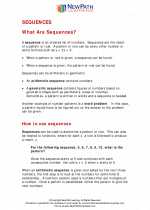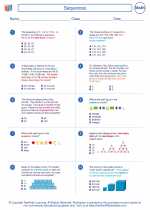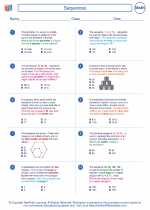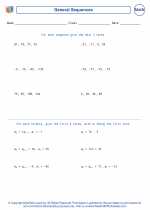Observation in Mathematics
Observation plays a crucial role in mathematics. It involves carefully watching, noting, and recording mathematical phenomena, patterns, and relationships. By making accurate observations, mathematicians can identify trends, formulate conjectures, and test hypotheses.
Types of Observations in Mathematics
- Numerical Observations: This involves observing numerical patterns, sequences, and relationships among numbers.
- Geometric Observations: This involves visually observing shapes, angles, and spatial relationships in geometric figures.
- Pattern Observations: This involves recognizing and predicting patterns in sequences, tables, and graphs.
- Statistical Observations: This involves collecting, organizing, and interpreting data to make observations about trends and distributions.
Study Guide for Making Observations
Here are some key steps to follow when making observations in mathematics:
- Focus: Identify the specific mathematical concept or problem you are observing.
- Record: Keep a detailed record of your observations, including numerical data, diagrams, or visual representations.
- Analyze: Look for patterns, relationships, and trends in the data you have collected.
- Formulate Hypotheses: Based on your observations, make educated guesses or hypotheses about what you have observed.
- Test: Use your observations to test your hypotheses and draw conclusions.
- Communicate: Clearly communicate your observations, findings, and conclusions to others.
Example of Observations in Mathematics
For example, when observing a sequence of numbers, such as 2, 4, 6, 8, 10, you may notice that each number is 2 more than the previous one. This observation leads to the hypothesis that the sequence follows a pattern of adding 2 to the previous number. You can then test this hypothesis by extending the sequence and checking if the pattern holds true.
Similarly, when observing the angles in a triangle, you may notice that the sum of the interior angles is always 180 degrees. This observation leads to the formulation of a theorem, which can be tested and proven using geometric principles.
By making careful observations in mathematics, you can gain insights into mathematical concepts, build intuition, and develop problem-solving skills.
.◂Math Worksheets and Study Guides Eighth Grade. Sequences

 Worksheet/Answer key
Worksheet/Answer key
 Worksheet/Answer key
Worksheet/Answer key
 Worksheet/Answer key
Worksheet/Answer key
 Worksheet/Answer key
Worksheet/Answer key
 Worksheet/Answer key
Worksheet/Answer key
